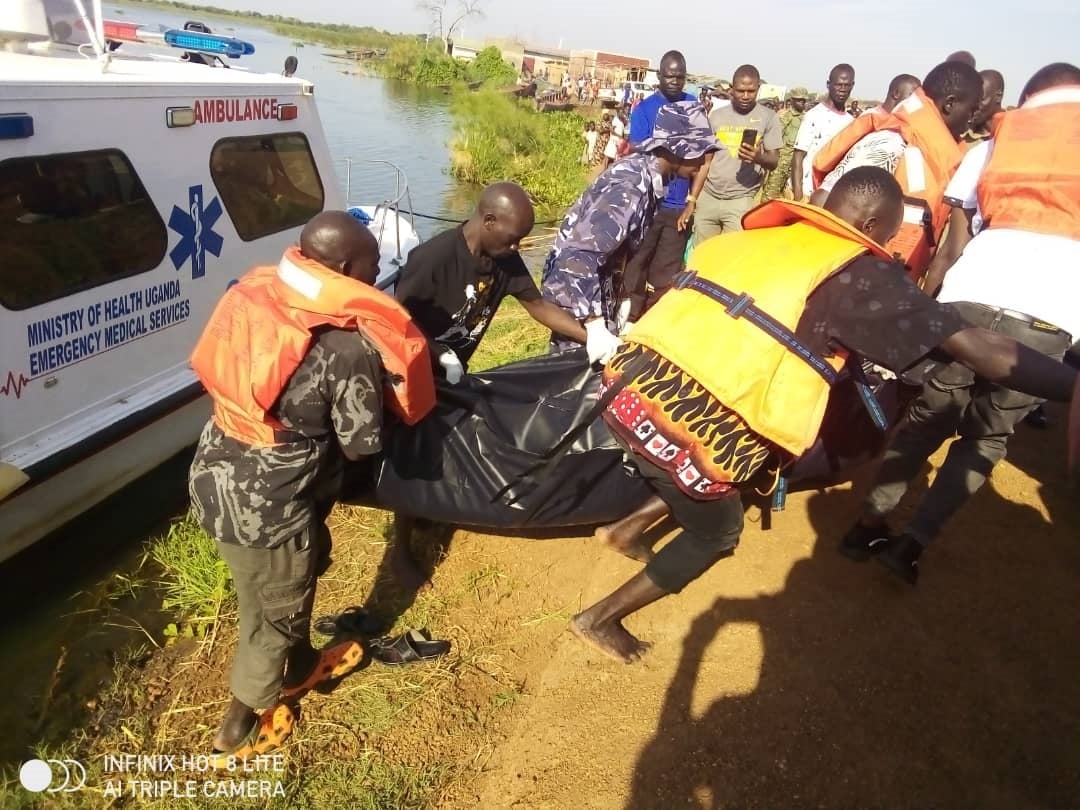Govt issues fresh orders on life jackets

A UPDF marines boat docks at a pier after returning from the accident scene. Photo | Ivan Walunyolo
What you need to know:
- The deadly consequences of this failure were again brought home in tragic circumstances very early yesterday morning.
- At least 25 souls are feared to have been lost when an overloaded, makeshift motorboat capsized in stormy conditions on Lake Victoria.
Five years after ordering the compulsory wearing of life jackets, the government has struggled to enforce the safety measure on the country’s water bodies, leading to more deaths.
The deadly consequences of this failure were again brought home in tragic circumstances very early yesterday morning.
At least 25 souls are feared to have been lost when an overloaded, makeshift motorboat capsized in stormy conditions on Lake Victoria.
Speaking in the aftermath of the tragedy, Works and Transport minister Katumba Wamala repeated the directive last evening.
“I have made an instruction that whoever enters a water vessel should wear a life jacket because the months of June, July and August are bad months; because there are always abrupt changes in the weather,” Gen Katumba noted.
The minister observed that “some Ugandans think they are smarter and each time an instruction that saves lives is issued, they do not want to follow it, they do not listen”.
He also spoke out against the tendency of commercial operators of such small boats to overload their vessels, revealing that the government plans to take extra steps to ensure compliance.
“We are going to use all the leadership on landing sites to ensure that no vessels carry people without life jackets. But also, safety starts with you.
Why do you allow to go on very deep waters without a life jacket [when] that is the only protection you have,” he said.
Tuesday’s mass loss of life recalled unhappy memories from November 24, 2018, when at least 33 people died on the lake.
In that shocking incident, the party boat MV Templar was carrying more than 90 people on a pleasure cruise before tragedy struck near Mutima Beach on the lake shores. The boat sank at about 7pm. Most of the dead were not wearing life jackets.
Following that disaster, the government said travellers wouldn’t be allowed to board water vessels without life jackets.
The government had also stopped boats ferrying passengers at night. But because Ugandans don’t listen, Gen Katumba said, this boat was travelling while it was still dark at about 5am.
Aboard the ill-fated craft were an estimated 34 passengers piled atop assorted cargo, including bags of charcoal from Lwanabatya Landing Site, Kyamuswa Sub-county in Kalangala District. Its destination was Kasenyi landing site near Entebbe in Wakiso District.
Eyewitnesses say the boat ran into strong headwinds moments before it flipped over near Nsazi Island in Mukono District. By press time, nine people are said to have been rescued.
Yesterday, Dr Chris Baryomunsi, the minister for ICT and National Guidance, said as investigations get underway, the “government is [also] having discussions to see if these people whose families have lost loved ones can be given any support”.
Dr Baryomunsi also called for stricter regulation of watercraft.
“The vessels should be inspected before they carry people, since they cannot be stopped while in transit to be inspected like traffic police does for cars on roads,” Dr Baryomunsi said.
Meanwhile, the public has again been cautioned about the risks which face marine transport on Lake Victoria during the months of June, July and August. Ms Lillian Nkwenge, the communications person at Uganda National Meteorological Authority warned that abrupt changes in the weather over the lake occur in this period, making it unsafe.
“As UNMA we have no control over lake management and use. We only give advisories embedded in the marine forecasts over the four zones of Lake Victoria. We also use the six hourly and daily forecasts to inform lake users, including fishing folk, transporters, and travellers,” Ms Nkwenge said.
About life jackets
A life jacket, also known as a personal floating device or buoyant vest, will keep one wearing it afloat in water, greatly increasing their chances of survival and rescue in case of an emergency.
Generally a sleeveless jacket which should be strapped tightly into place, a life jacket goes for not less than Shs80,000, an amount some fishermen and boat operators say they cannot afford.





